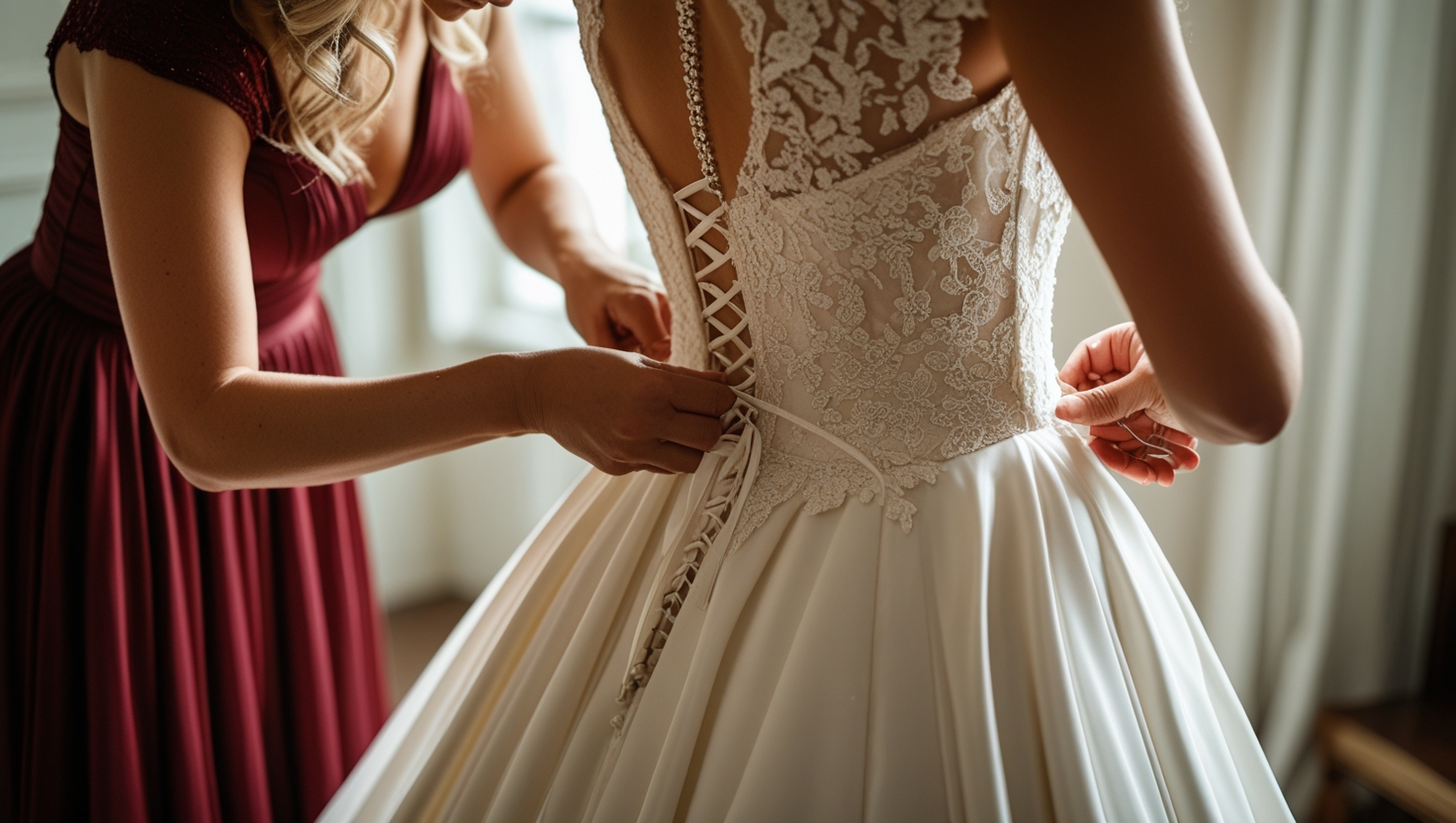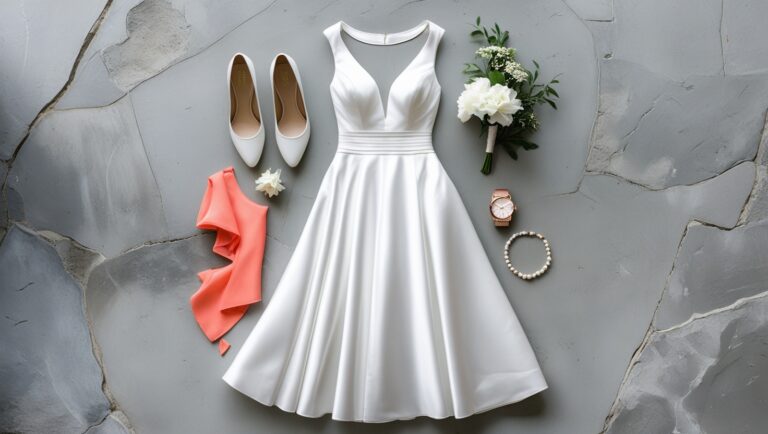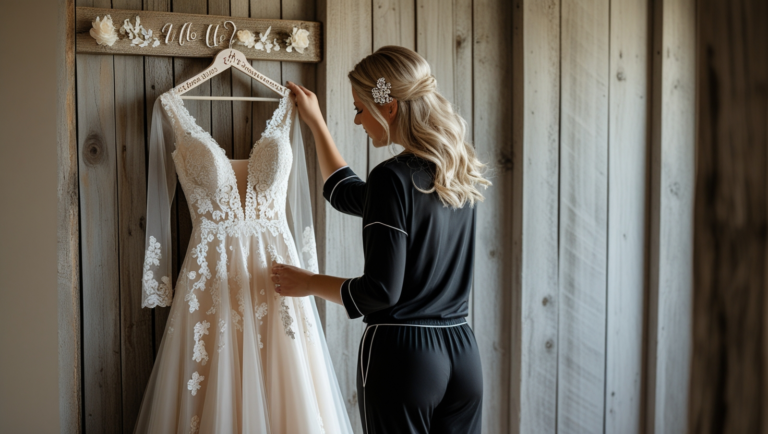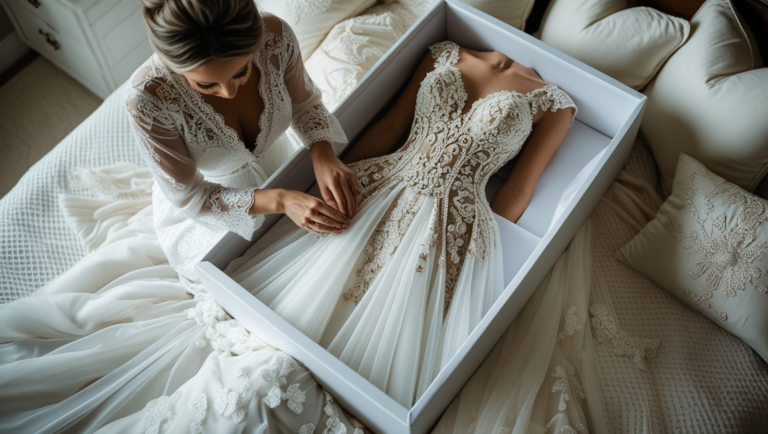How Much Does It Cost To Tailor A Wedding Dress In 2025?
When it comes to weddings, finding the perfect dress is one of the most exciting parts for a bride. But getting a dress that fits just right isn’t as simple as picking one off the rack and wearing it. Most wedding dresses need a little extra work to make sure they fit perfectly, and that’s where tailoring comes in. Tailoring means adjusting the dress to match the bride’s body, making it look like it was made just for her.
But how much does it cost to tailor a wedding dress? The price can vary a lot, depending on the type of changes the dress needs, how detailed the dress is, and even where you live. Knowing these factors ahead of time can help brides plan and avoid any surprises in their budget.
In this article, we’ll break down the different factors that affect the cost of tailoring a wedding dress. We’ll also share some real-life examples to help you understand better. In the last paragraph, we’ll answer common questions brides often ask about tailoring so you can feel confident in making decisions for your special day.
Learn more about: How much does it cost to clean a wedding dress?
The Basics of Wedding Dress Tailoring Costs
Tailoring a wedding dress involves adjusting the fit, style, or details to make it suit the bride perfectly. On average, tailoring can cost anywhere between $150 and $1,000. This broad range is because tailoring needs can differ widely based on the dress design, the complexity of alterations, and the location of the tailor.
Think of it like customizing a pair of shoes. If you just need to change the laces or polish them, the cost is low. But if you want to change the heel height or add some sparkle, it becomes more expensive.
Similarly, wedding dress tailoring depends on how much work is needed to transform the gown into the perfect fit.
Learn more about: How Long Do Dress Alterations Take?
What Affects the Cost of Tailoring a Wedding Dress?
1. Type of Alterations Needed
The cost largely depends on the specific alterations required. Here’s a breakdown of common alterations:
- Hemming the Length: Dresses often need the hem shortened to fit the bride’s height, especially if she is not wearing high heels. This usually costs around $50 to $250, depending on the number of layers in the skirt.a
- Taking In or Letting Out the Dress: If the dress is too tight or too loose, adjustments may be necessary. These can range from $75 to $300, with more complex styles costing more.
- Adjusting the Bust Area: Many brides need alterations around the bust to ensure a secure fit. The cost for this is typically between $30 and $100.
- Adding or Removing Sleeves or Straps: If you want to add lace sleeves or remove straps, expect to pay about $50 to $200.
- Restructuring the Bodice or Waist: If significant adjustments are needed to change the overall shape of the dress, the price could go up to $500 or more.
2. The Complexity of the Dress Design
Dresses with intricate details, like beading or lace, are more expensive to alter. Why? Because the tailor has to carefully remove and then replace these details. Imagine if you wanted to repaint a room with wallpaper; you’d have to remove the wallpaper carefully, paint, and then put it back. It’s the same with these dresses.
3. The Number of Alterations
Some dresses may only need one or two adjustments, while others might require multiple changes. Each additional alteration adds to the cost. It’s like fixing a car – changing just the oil might not cost much, but if you need to replace the tires, brakes, and oil, the total cost increases.
4. Geographical Location
Where you live can greatly influence the cost of tailoring. Tailors in large cities or high-cost areas often charge more for alterations than those in smaller towns. For example, a hem alteration might cost $200 in New York City, but only $75 in a smaller town. This difference is similar to how the price of a movie ticket can vary depending on the city.
Why Does It Take Time and Money to Alter a Wedding Dress?
Tailoring is not just about stitching fabric together; it requires skill and time. Tailors must carefully examine the dress, often fitting it on the bride several times to ensure the perfect fit. This process can take several weeks. The tailor’s time and expertise are a major part of the cost.
Think of tailoring like crafting a sculpture. It takes time, skill, and effort to shape something exactly how you want it. Tailoring a wedding dress is an art that involves adjusting fabric, lining, and delicate details.
How to Save Money on Wedding Dress Alterations
1. Buy a Dress That’s Close to Your Size
If the dress you buy is close to your actual size, fewer alterations will be needed. This can save a lot of money. For example, a dress that is only a little too long is easier and cheaper to hem than one that needs to be taken in several sizes.
2. Plan Ahead
Last-minute alterations can be more expensive because tailors may charge a rush fee. Start alterations 2 to 3 months before the wedding to avoid rush charges.
3. Ask for a Package Deal
Some bridal shops offer alteration packages that cover all necessary changes for a set price. This can be more affordable than paying for each alteration individually.
Real-Life Examples to Make It Clearer
Let’s look at a few scenarios to understand the cost better:
- Simple Alteration for a Minimalist Dress
Emma has a dress with a simple design. She only needs the hem shortened and a slight adjustment in the bust. Her total cost is $150. - Multiple Alterations for a Lace Dress
Olivia’s dress has lace details and a fitted bodice. She needs the hem shortened, the bodice adjusted, and the lace reattached. The cost comes to $600 because of the delicate work involved. - Major Alteration for a Customized Fit
Sarah bought a dress two sizes too big because it was on sale. She needs the waist taken in, the sleeves added, and the hem shortened. Her alteration bill is $800 because of the significant changes needed.
Conclusion
Tailoring a wedding dress can be one of the most important parts of making sure a bride feels confident and comfortable on her special day. As we’ve explored in this article, the cost of tailoring can vary based on the type of alterations, the dress’s style, and where you live. Some dresses may only need simple changes like shortening the hem, while others might need more detailed work such as adjusting the bodice or adding sleeves. In the end, every bride’s dress is unique, and so is the cost to make it perfect.
On average, brides should expect to pay between $150 and $1,000 for alterations. While that might seem like a wide range, the amount depends on how much needs to be changed. In the last paragraph, we discussed ways to save money, such as buying a dress that’s close to your size and planning ahead to avoid rush fees. These simple steps can help make the process smoother and more affordable.
In conclusion, understanding the factors that affect tailoring costs can help brides budget wisely and avoid last-minute stress. With the right planning and preparation, brides can feel confident that their dress will be a perfect fit for their big day!
FAQs
Can I avoid tailoring my wedding dress?
While it’s possible, most brides need at least minor adjustments to ensure the dress fits perfectly. Even simple changes, like hemming, can make a big difference in comfort and appearance.
How long does the tailoring process take?
Typically, tailoring takes 4 to 8 weeks, with multiple fittings required. Starting early is key to avoid rush fees.
What if I lose or gain weight before the wedding?
Inform your tailor if you expect any weight changes. Some tailors can schedule a final fitting closer to the wedding date to make last-minute adjustments.
Is it cheaper to alter a used wedding dress?
Not necessarily. The cost depends on the alterations needed, not whether the dress is new or used. In fact, some used dresses may require more work if they’ve already been altered.
Do all bridal shops offer alterations?
Not all do, but many bridal shops have in-house tailors or can recommend trusted professionals.
Understanding these factors helps brides make informed decisions, ensuring their dress fits beautifully and comfortably without breaking the bank.







